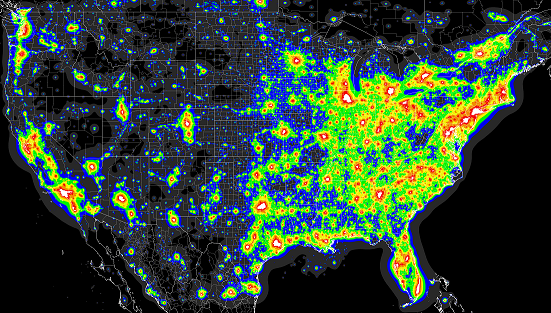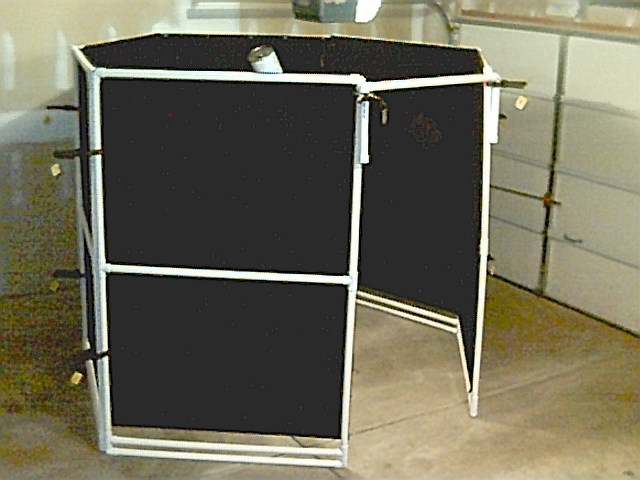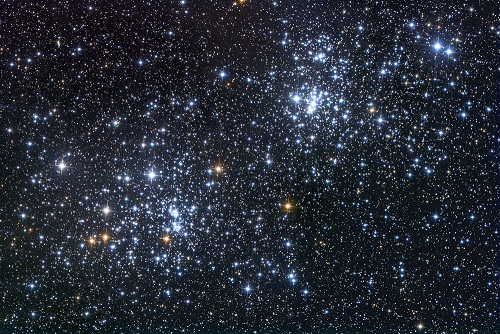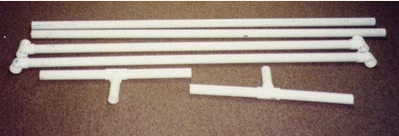Intermarkets' Privacy Policy
Donate to Ace of Spades HQ!
aceofspadeshq at gee mail.com
Buck:
buck.throckmorton at protonmail.com
CBD:
cbd at cutjibnewsletter.com
joe mannix:
mannix2024 at proton.me
MisHum:
petmorons at gee mail.com
J.J. Sefton:
sefton at cutjibnewsletter.com
Daily Tech News 23 December 2025
Monday Overnight Open Thread (12/22/25)
Monday Cafe
Brown Custodian: I Warned Security About the Sketch Guy "Casing" the School Who Would Ultimately Shoot It Up
Surprise: The "Reporter" Who Leaked and Whined That Her Hit-Piece Got Held Up Turns Out to Have a History of Batty Leftwing Propaganda Pieces
Is This Something?
Communist Cuba "On Edge of Collapse" Due to Trump's Oil Embargo of Cuba's Key Ally Venezuela
Epstein Files Reveal Bill Clinton Cavorting With Very Young Women on Pedo Island; Democrat Flacks and Leftwing Media -- But I Repeat Myself-- Claim Trump Is "Curating" the Photos to Make Slick Willy Look Bad
AGAIN: Violent Deranged Homeless Man, Set Free By Leftwing Judges Over and Over Again, Randomly Slashes and Permanently Blinds a 75 Year Old Woman
Jim Sunk New Dawn 2025
Jewells45 2025
Bandersnatch 2024
GnuBreed 2024
Captain Hate 2023
moon_over_vermont 2023
westminsterdogshow 2023
Ann Wilson(Empire1) 2022
Dave In Texas 2022
Jesse in D.C. 2022
OregonMuse 2022
redc1c4 2021
Tami 2021
Chavez the Hugo 2020
Ibguy 2020
Rickl 2019
Joffen 2014
maildrop62 at proton dot me
TBD
Spaced-Out Challenge: Under the Washed-Out Sky

If you are like me, you don't live in the pristine wilderness of Utah, the Atacama Desert, or the dark mountaintops of West Virginia. No, you are one of the hundreds of millions who live in exurban, suburban, or urban areas, so your night sky may at first seem less than overwhelming:
With so little to work with, how can you possibly enjoy the wonders of the night?
I'll show you.
Remember the list of dark sky sites for all fifty states from the Perseid thread a few weeks back? Much of that list utilized a LP map for identifying darker locations. From this, you can see I'm not exactly living under ideal skies myself:

In fact, I'm willing to bet my skies are worse than nearly everyone reading this. So why don't I get frustrated? There are several simple tricks you can use to improve your viewing from even the worst glow-bombed zones (and for a list of targets within reach from just such areas, check this out).
Drive One Zone Darker
Scout out a close spot (<30 minutes away) that offers at least one zone darker skies. 97% of Americans can readily do this, and while there may seem like little difference at first, after your eyes can adjust, the improvement can be stunning:

A twenty minute drive gets me into the San Bernardino Mountains. After letting my eyes adjust for a good half-hour, the Milky Way begins to make its presence known, numerous clusters and nebulae are visible naked-eye with averted vision, and the number of visible stars has increased a hundred-fold. Is it an ideal dark sky spot? Of course not. I could drive another hour and really see the stars. But that means a nearly 3 hour round trip, and for most that just isn't very practical.
If you want to skip even a short drive, there are still options for you to maximize your observing experience.
Get Your Eyes Adapted
Our eyes have an incredible ability to adjust to darkness. After a good half-hour from a very dark site, we can even eyeball Uranus, which rarely brightens beyond magnitude +5.7. The same holds true in urban environments, if we protect ourselves from bright lights. I suggest buying Orion's AstroGoggles:

At only $19.99, they help your eyes adjust and stay dark adapted even when checking your cell or walking inside the house for a coffee. Oversizing makes them an ideal option for eyeglass wearers. You may look a member of DEVO wearing them, but nobody said astronomy was high fashion.
Build a Light Barrier

If you live off a busy street like me, the constant stream of cars can make a long night of observing a headache. Or perhaps you have that neighbor who insists on leaving his floodlights on. Building your own portable light shields is a cost effective way to eliminate these sources of nuisance light. John Duchek at CloudyNights has a great step-by-step build guide for making your own light shields. I've modified it a bit to include his "updated" bits (they were a work in progress with his initial publication) and current prices for all required materials. You can make four of these light shields for less than $100 and they are incredibly effective:
When I can get fully dark adapted, I can see magnitude 5.2 stars from this site so the sky can be seen reasonably well if the light trespass from the neighbors can be blocked. In addition cars pass by at irregular intervals. To stop the light trespass, I have built 6.5'x 5' light shields at a cost of about $10-15 each. The first one is somewhat more expensive since you may have to buy the "general equipment". Each takes 1.5-2 hours to build if all parts are present...
Initially, three of these devices have been successful at shielding me from all of the lights above and all car lights going by my house. I can now remain with dark adapted eyes for hours in my neighborhood...
To build a 6.5 foot x 5 foot light shield, you need the following:General equipment:
Can of PVC cement $4.50 (good to make many light shields)
1 roll (10ft x25 ft) of 3 mill black plastic sheeting (enough for 8 shields) [$10] Some of the black plastic I saw was not opaque and let a little light through. Check that it is opaque before you buy.
Hack saw [$7]For each shield you need the following:
3 x10ft pieces of 1" PVC pipe $10 total
4 x1" PVC Tees $2.50 total
2 x" PVC 90 degree elbows $1.20 total
15 inches of Velcro tape [buy industrial grade $8-$18]Directions:
Cutting:
Cut 1 PVC pipe into 2 x 5'0" pieces
Cut 5'7' pieces from the other two 10 foot pipes
From one of the 4 ' 5" remnants, cut 2 x 6" pieces and 3 x 1 foot pieces
From the second remnant, cut 1 additional 1 foot piece
Gluing:
Glue 90 degree elbows to each end of 5 foot section (be sure they point same way) (Piece #1)
Glue the center hole of tee to each end of the other 5 foot section (be sure that they line up parallel as in picture) (Piece #2)
Glue 2 1 foot section in to ends of 3rd tee
Glue 2 1 foot section in to ends of 4th tee
Glue 6 " piece into center hole of parts from step 3 and 4 (Piece #3 and #4)
The two 5'7" pieces are pieces 5 and 6.Once the glue has dried, the frame is assembled. I put a very small amount of grease on the unglued joints to be sure I can easily separate them when desired...[cut 12 1" strips of velcro] use a good contact cement, paint on both the pipe and back of Velcro, allow to get tacky, and press together. A rubber band is useful to hold the Velcro fast until it has completed the drying process...
Assemble the frame as in the pictures. Here is a picture of a completed single frame unit.
Cut a 6 foot piece of the black plastic off the roll. Hang the strip (it is 10 foot wide) over the frame so that both sides are equal. Cut the plastic sheet in half. This gives you two 6 foot x 5 foot sheets. [Line up] one of the sheets (five foot part horizontal) to all 12 strips of velcro, [staple identically sized velcro strips to light shield frame, line up,] and your light shield is complete. You may or may not wish to trim the bottom inch or two off the bottom of the sheet. (mine drag the ground by about an inch and keep ground level light our nicely.
Light barriers can be built with more durable materials, but if you're on a budget, 3mil and pvc can't be beat. If your own outdoor lighting makes observing difficult, Lowes now offers IDA-approved dark-sky friendly lighting mounts that can greatly improve your backyard sessions too.
Protect Your Instrument from Stray Light

Reflector telescopes often have the secondary mirror and focuser close to the open end of the telescope. This puts both at risk of being impacted by stray light. A simple solution to this is making yourself a "light shield" that effectively extends your telescope tube and eliminates this risk. The Washed-Out Astronomer offers this great $5 DIY light shield project:
Step one is to acquire or fabricate a rectangle of black poster board paper of the appropriate size. The end ring of my telescope tube has an outer circumference of 38.5 inches. Allowing some excess for gluing, I needed a rectangle of poster paper about 42 inches wide. The common wisdom is that the front of the telescope tube should extend a full tube diameter beyond the focuser. So for my telescope that meant the rectangle should be at least 12 inches long.
At the local arts and crafts store, I found sheets of 22 x 28 inch poster board paper. I glued two of these together to make a 42 inch wide sheet. I used ordinary white glue to join the sheets. Don’t make the overlap too big and apply the glue evenly but sparingly. Otherwise the overlapped section will be rather stiff and hard to shape into an arc of a cylinder (I overlapped about 3 inches). Be sure to join the two sheets squarely. After the seam dried, I overlaid the each side of the seam with packing tape...
After gluing, I had a 42 x 22 inch sheet...I then shaped the big sheet into a cylinder and glued it. To hold it while the glue set, I used clothes pins to clamp the top and bottom of the seam, added a little tape in the middle, and then laid the cylinder, seam side down, on the floor with a couple of liter bottles of water inside the cylinder on top of the seam to keep pressure on it. Once the seam was dry I again taped it on both sides. To keep the cylinder ends from fraying, I also taped the rims all around. It was almost finished—almost, but not quite.
The final step was to try it on for fit. My intention had been to have the extension tube fit snuggly around the top end ring of my telescope and have it rest against the four "nuts" that anchor the secondary vanes. Unfortunately, the fit was a bit too loose. To make it a snug fit, I originally planned to line the inside bottom area of the cylinder with foam. But then I realized that the fit was loose enough that I could actually wiggle the extension tube over the tops of the four spider vane nuts. That made for a really snug fit and locked the light shield in place very tightly. To keep the nuts from eating into the poster board, I put some tape strips on the inside of the cylinder at the four spots where the nuts rub against the light shield. The smooth tape surface also makes it easier to slide the light shield on and off.
Finally, I marked the outside of the cylinder with white and red crayon (borrowed from my daughter) so that a red flash-light will highlight the taped areas on the light shield. This way even in the dark I can easily align the taped areas with the four nuts. The crayon markings are clearly visible in the photo below showing the light shroud fully seated on the telescope.
WOA lives in suburban D.C., so his site is a must-read for budding astronomers living under less-than-ideal skies. The full step-by-step guide for his shield is here.
A Quick Diverson: Target Object this Week
Before we wrap things up, let us take a quick trip back to Perseus to enjoy a great sight from any sky with binoculars and, with a low-power wide-field eyepiece, any telescope, the Double Cluster:

The two clusters, NGC 884 and NGC 869, are a thing of beauty in whatever instrument you aim at them. Recent studies offer conflicting viewpoints on whether the clusters are actually close in age and proximity to each other, but lets set aside the more scientific intrigue of these two and just enjoy these multicolored (look for the reddish variables sprinkled throughout) wonders.
Here's where to look:

Bringing It All Together
By darkening your immediate environment and protecting your vision, you will be amazed just how many stars you actually can see, not to mention deep sky objects that reveal themselves as faint fuzzies. I have eyeballed the Orion Nebula, Andromeda Galaxy, Great Globular in Hercules, and the Double Cluster from my front porch, and hundreds of objects with binoculars, including Omega Centauri. It takes effort, patience, and a few extra steps, but the urban astronomer is by no means an anachronism.
Finding faint deep sky objects from your own backyard is challenging, but rewarding: if you can hunt them down from a washed-out location, finding them from a dark site will be lightning fast. These faint, hazy blobs become wondrous on those remote treks, which leads us to our final thought this week: the glory of visual observing.
I am a big fan of astrophotography, whether by the inexperienced or the Hubble team. Our cameras reveal details our eyes cannot, and with various filters these images become an art that leaves us reveling in the awesomeness of the cosmos. However, there is something missing from that photographic plate, that false-color reveal, that XRAY printout. There is a rawness, a sense of grandeur that words fail to describe. A near-invisible world of the infinitely large whose secrets unravel in the stillness of the eyepiece. Everyone has seen Hubble's Pillars of Creation photograph.
But witnessing the ghostly image of those massive plumes of gas after years of trying, as small and as faint and as elusive as they are...there is a moment that just strikes you. Grab a ruler, and shrink our whole solar system down where the sun is an inch from the earth. Our home world is utterly invisible at this scale. The sun is so small it appears as a pinpoint of light, not even filling a millimeter on the other side of your ruler. Those ghostly apparitions in the eyepiece would stretch over six miles long.
We are part of something impossibly vast and in every sense of the word truly overwhelming. At no time in our history has it been easier for us to experience this on an intimate level. With more resources than we can ever count, a total novice can observe worlds and structures we were unaware of just decades ago. Nothing will ever replace seeing the night sky in real time, with a real telescope, with our real eyes. Nothing.
If you missed it, the beginner's buyer guide is here. Until next week, clear skies to you, and keep looking up.
Ordinary American: "31 How Trump Can Turn the Midterms Around Arres ..."
Piper: "120 He says his family has no "generational wealth ..."
I used to have a different nic[/s][/b][/i][/u]: "[i]Language is hard, and English is particularly h ..."
Lady in Black[/i][/b][/u][/s]: "Another crazy animal slams their car into people a ..."
Huck Follywood: "Lefties are all atwitter over the 60 Minutes story ..."
SH (no more socks): " There was a clip of a child trying to sound a wor ..."
Universal truth : "You get what you tolerate. ..."
Joe Mannix (Not a cop!): "... Our language does effect how we think and vice ..."
Don Black: ">POTUS Unveils Plans for ‘Golden Fleet’ ..."
Smell the Glove : "After Bernie swears in Mandani he can go to Crown ..."
Bilwis Devourer of Innocent Souls, I'm starvin' over here: "Am I the only one that doesn't think Trump ever in ..."
Daily Tech News 23 December 2025
Monday Overnight Open Thread (12/22/25)
Monday Cafe
Brown Custodian: I Warned Security About the Sketch Guy "Casing" the School Who Would Ultimately Shoot It Up
Surprise: The "Reporter" Who Leaked and Whined That Her Hit-Piece Got Held Up Turns Out to Have a History of Batty Leftwing Propaganda Pieces
Is This Something?
Communist Cuba "On Edge of Collapse" Due to Trump's Oil Embargo of Cuba's Key Ally Venezuela
Epstein Files Reveal Bill Clinton Cavorting With Very Young Women on Pedo Island; Democrat Flacks and Leftwing Media -- But I Repeat Myself-- Claim Trump Is "Curating" the Photos to Make Slick Willy Look Bad
AGAIN: Violent Deranged Homeless Man, Set Free By Leftwing Judges Over and Over Again, Randomly Slashes and Permanently Blinds a 75 Year Old Woman
Paul Anka Haiku Contest Announcement
Integrity SAT's: Entrance Exam for Paul Anka's Band
AllahPundit's Paul Anka 45's Collection
AnkaPundit: Paul Anka Takes Over the Site for a Weekend (Continues through to Monday's postings)
George Bush Slices Don Rumsfeld Like an F*ckin' Hammer
Democratic Forays into Erotica
New Shows On Gore's DNC/MTV Network
Nicknames for Potatoes, By People Who Really Hate Potatoes
Star Wars Euphemisms for Self-Abuse
Signs You're at an Iraqi "Wedding Party"
Signs Your Clown Has Gone Bad
Signs That You, Geroge Michael, Should Probably Just Give It Up
Signs of Hip-Hop Influence on John Kerry
NYT Headlines Spinning Bush's Jobs Boom
Things People Are More Likely to Say Than "Did You Hear What Al Franken Said Yesterday?"
Signs that Paul Krugman Has Lost His Frickin' Mind
All-Time Best NBA Players, According to Senator Robert Byrd
Other Bad Things About the Jews, According to the Koran
Signs That David Letterman Just Doesn't Care Anymore
Examples of Bob Kerrey's Insufferable Racial Jackassery
Signs Andy Rooney Is Going Senile
Other Judgments Dick Clarke Made About Condi Rice Based on Her Appearance
Collective Names for Groups of People
John Kerry's Other Vietnam Super-Pets
Cool Things About the XM8 Assault Rifle
Media-Approved Facts About the Democrat Spy
Changes to Make Christianity More "Inclusive"
Secret John Kerry Senatorial Accomplishments
John Edwards Campaign Excuses
John Kerry Pick-Up Lines
Changes Liberal Senator George Michell Will Make at Disney
Torments in Dog-Hell
The Ace of Spades HQ Sex-for-Money Skankathon
A D&D Guide to the Democratic Candidates
Margaret Cho: Just Not Funny
More Margaret Cho Abuse
Margaret Cho: Still Not Funny
Iraqi Prisoner Claims He Was Raped... By Woman
Wonkette Announces "Morning Zoo" Format
John Kerry's "Plan" Causes Surrender of Moqtada al-Sadr's Militia
World Muslim Leaders Apologize for Nick Berg's Beheading
Michael Moore Goes on Lunchtime Manhattan Death-Spree
Milestone: Oliver Willis Posts 400th "Fake News Article" Referencing Britney Spears
Liberal Economists Rue a "New Decade of Greed"
Artificial Insouciance: Maureen Dowd's Word Processor Revolts Against Her Numbing Imbecility
Intelligence Officials Eye Blogs for Tips
They Done Found Us Out, Cletus: Intrepid Internet Detective Figures Out Our Master Plan
Shock: Josh Marshall Almost Mentions Sarin Discovery in Iraq
Leather-Clad Biker Freaks Terrorize Australian Town
When Clinton Was President, Torture Was Cool
What Wonkette Means When She Explains What Tina Brown Means
Wonkette's Stand-Up Act
Wankette HQ Gay-Rumors Du Jour
Here's What's Bugging Me: Goose and Slider
My Own Micah Wright Style Confession of Dishonesty
Outraged "Conservatives" React to the FMA
An On-Line Impression of Dennis Miller Having Sex with a Kodiak Bear
The Story the Rightwing Media Refuses to Report!
Our Lunch with David "Glengarry Glen Ross" Mamet
The House of Love: Paul Krugman
A Michael Moore Mystery (TM)
The Dowd-O-Matic!
Liberal Consistency and Other Myths
Kepler's Laws of Liberal Media Bias
John Kerry-- The Splunge! Candidate
"Divisive" Politics & "Attacks on Patriotism" (very long)
The Donkey ("The Raven" parody)



